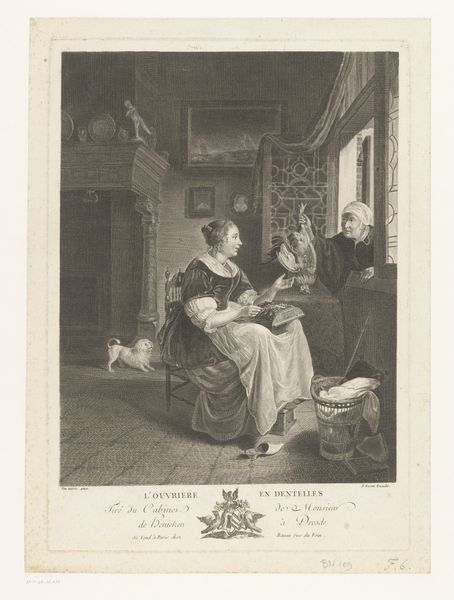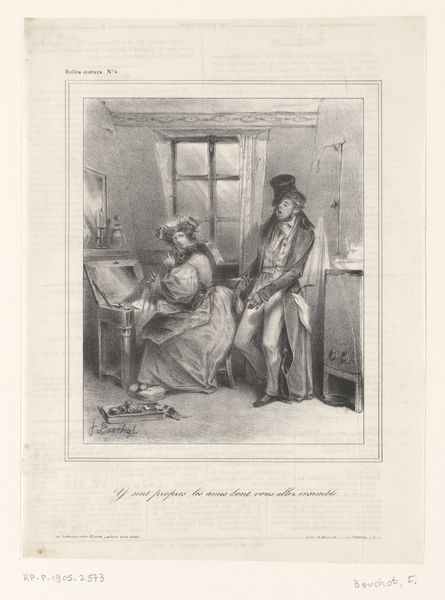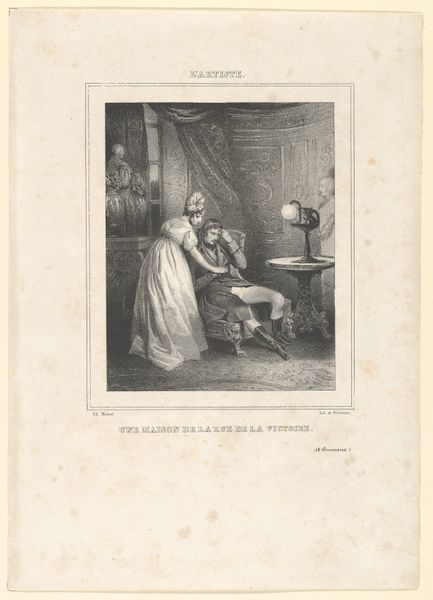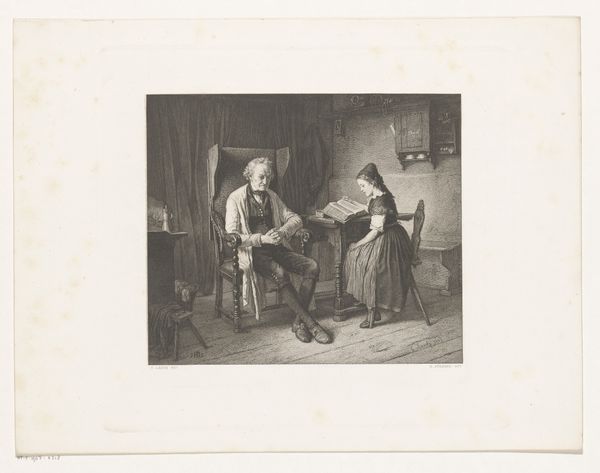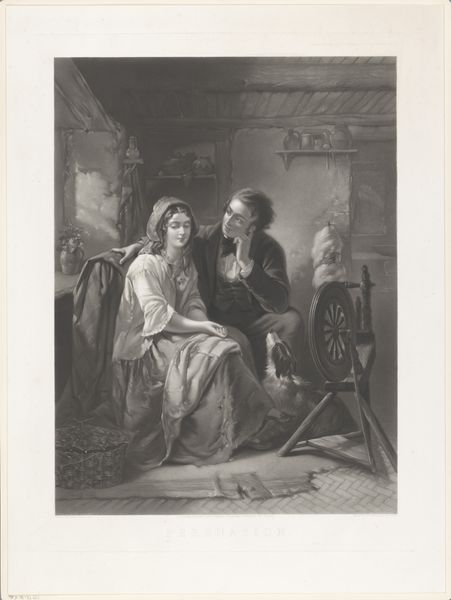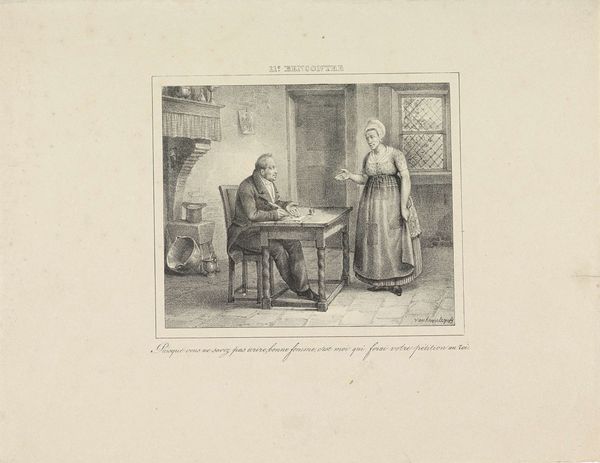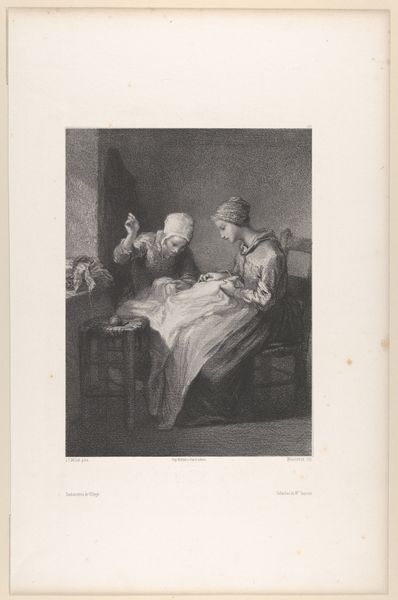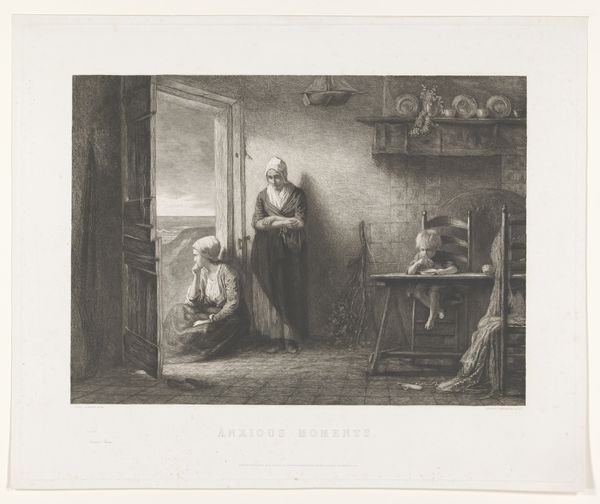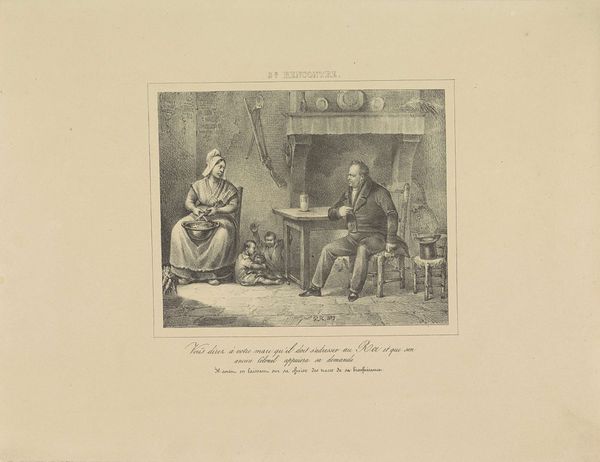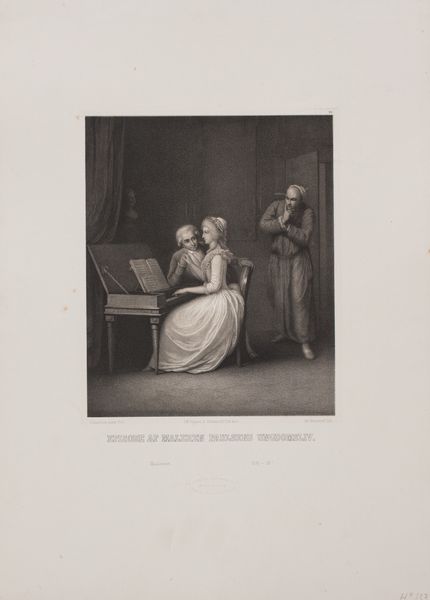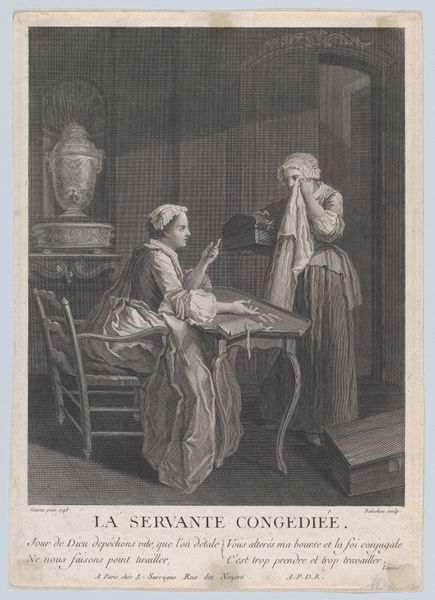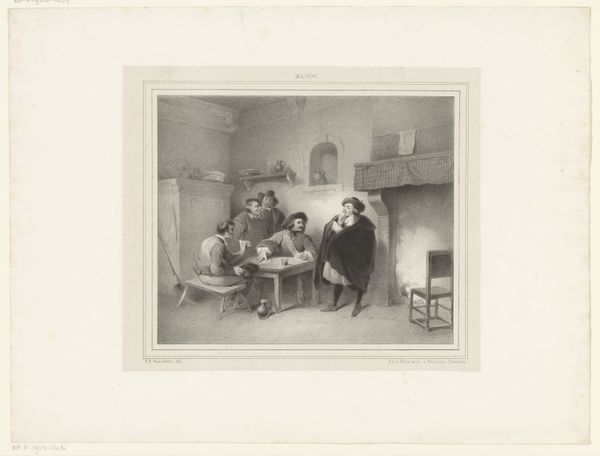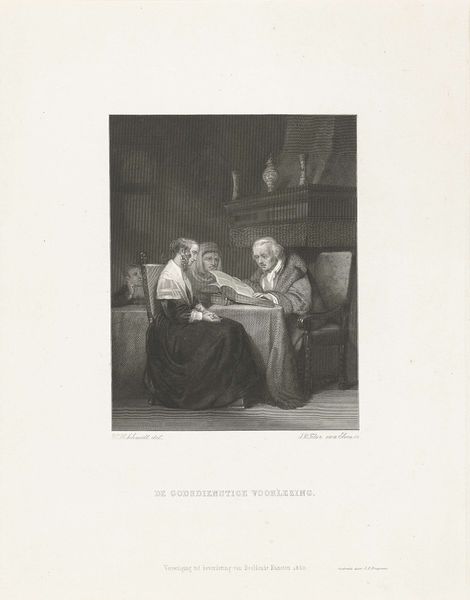
Dimensions: height 258 mm, width 184 mm
Copyright: Rijks Museum: Open Domain
Curator: Let’s examine this print entitled "Interieur met koekenbakster en jongen bij een haard," or "Interior with a pancake baker and boy by a fireplace," made around 1767. It’s a narrative scene rendered in engraving, originally designed by G. Metszyn and engraved by J. Spilsbury. Editor: Immediately, there's a strong sense of domesticity and gentle labor, all rendered in tones of gray. It's visually soothing. It calls forth feelings of warmth and intimacy, almost like peering into a memory. Curator: I agree, the intimacy stems from it being genre art - art about everyday life, about evoking sentiments tied to ordinary moments. Images like this reinforced societal values around home and family. It creates a shared history. Editor: Do you see those seemingly simple pancakes? The boy holds one like a prized possession. Food has always been symbolic – it's nourishment, life, celebration, community. The artist captures food's cultural significance here, a small circle representing larger familial bonds. Curator: Precisely. Look at the placement of the hearth – literally and symbolically at the heart of the home. Notice how the scene is subtly divided: mother at labor while the son is enjoying the benefit, the composition subtly reinforces traditional gender and generational roles. The hearth connects it all. Editor: Interesting, and consider how firelight dances with shadow. In that era, it could signify both danger and safety – a controlled power bringing heat but threatening to consume. This engraving then seems more like an exploration of opposing elements finding balance, maybe mirroring aspects of familial life. Curator: Indeed, and this reminds me of the evolving role of art and its audience in 18th-century society. As more people had access to engravings like these, art played a greater role in constructing ideas about domestic virtue. Consider the historical period as a framework of understanding art’s reach beyond mere aestheticism. Editor: Thinking about these roles and representations, it feels less spontaneous and more didactic now. We're invited into this space not just to observe but to learn, reinforcing the era's codes for domestic tranquility. Curator: But the soft, grey tones don't scream "instruction manual;" they encourage gentle assimilation. So, although social messages are layered in, they're couched within visual comfort. It brings a complexity to what might appear as simply quaint. Editor: In looking closer, there's an undeniable complexity. We have navigated through layers of warmth, simplicity, domesticity and the politics of representation of art in a public forum. Thank you! Curator: And in looking, it brought forth so many other considerations, especially about continuity between those moments in history, our historical narrative. It was such a privilege!
Comments
No comments
Be the first to comment and join the conversation on the ultimate creative platform.
